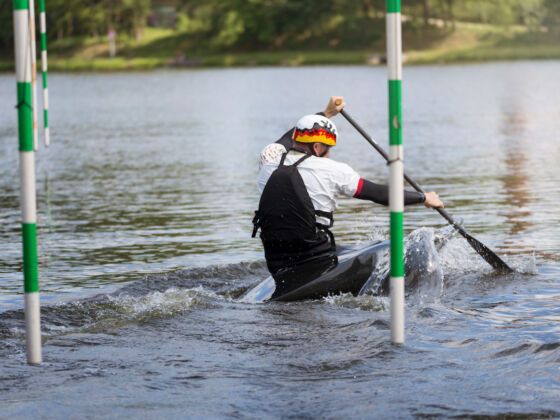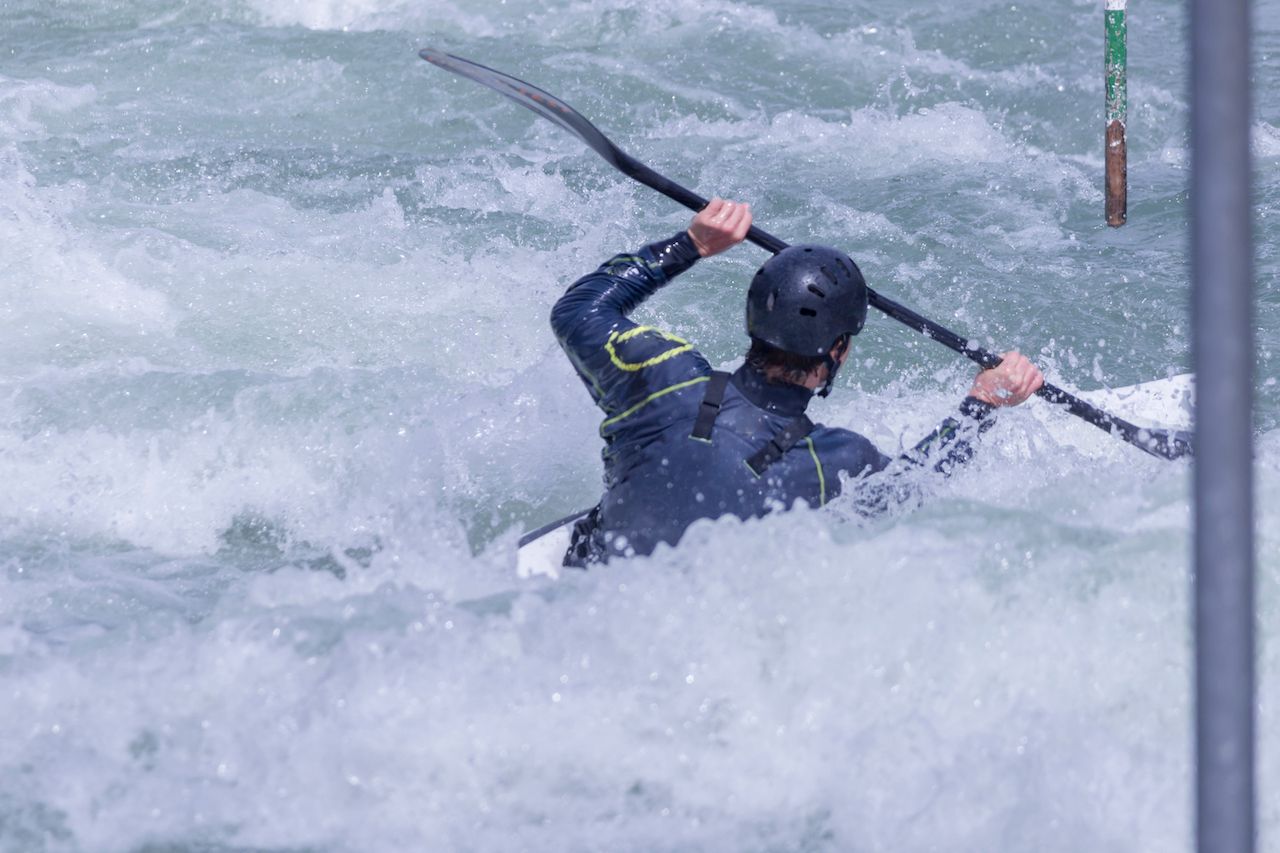Squirt boating takes all the extras in kayaking and rips them away. All you are left with is thin, tight-fitting watercraft that floats — but just barely. That’s intentional. Squirt boating is kayaking in its minimalist form, playing with the most basic physics of buoyancy. The result is a craft that lets paddlers perform tricks much more easily than on a traditional kayak.


Squirt Boating Is a Weird New Take on Kayaking, and the Tricks Are Insane
For the past several years, some of the sport’s most dedicated have taken this concept to new levels. The name “squirt” is said to come from the idea of how the boat shoots forward like it’s being squeezed through the water. Squirt boats barely stay afloat even in calm river conditions, but they’re agile enough that the paddler can easily turn right or left with the flick of their stick.
If you spend much time hanging by a whitewater zone, you may have already seen squirt boating in action. Remember that paddler that you thought was totally out of control, hull submerged and stern sticking straight up in the air? That’s not out of control. That’s some skillful squirt boating, right there. Here’s more on this weird but awesome sub-genre of kayaking.
How is squirt boating different from normal kayaking?

Photo: Werner Rebel/Shutterstock
Squirt boats aren’t the most practical craft for navigating long-distance paddles. Instead, they are used primarily to perform freestyle tricks in specific water conditions like flatwater or in eddy lines. Becoming perpendicular to the water is far easier in a squirt boat than in a normal kayak as the boat itself barely floats — add the paddler into the equation, and it’s something akin to a bucking bronco on the water, flapping and floundering but still somehow in total control. Perpendicular or near-perpendicular stances are the basis for many freestyle moves in the sport, and squirt boating developed a niche following among freestyle kayakers since it first appeared in the 1980s.
The kayaking term “mystery move” is most easily demonstrated on a squirt boat. In this trick, the kayaker — or squirt boater, in this case — completely submerges themselves below water using a combination of paddle technique and the boat’s easy maneuverability. Some paddlers prefer circular hand paddles to the traditional kayak paddle, allowing for more movement underwater.
Squirt boats are built differently than traditional kayaks and covered canoes. They’re typically made of fiberglass, carbon, and kevlar. The bow remains dense and allows for leg placement to be secured in the craft like a kayak but with more knee movement, while the stern is quick and turns on a dime. If you were to be blindfolded and sent out squirt boating on flat water, it would feel very much like you’d been strapped to a small surfboard.
Diehard paddlers looking to engage in squirt boating are likely to have a boat custom-built to their body size and style. Most squirt boats are between eight and 10 feet long, though they sometimes reach 11 feet. A shorter boat makes it easier to flip, twist, and submerge but will also be more difficult to maintain your balance on. It’s best to start on a longer boat and progress to a shorter boat as you improve. Before purchasing a squirt boat, sample a few different sizes and builds to find what you feel the most comfortable with.
If buying a used boat, ask the seller about their physical build (or that of the person who rode the craft). Are they similar in size to you? If not, keep searching.
Where can I try squirt boating?
Step one is finding a squirt boat. Murky Water Kayaks out of Ontario, Canada, makes a few varieties and has emerged as the leader in squirt boat design. The Hellbender and Bigfoot are among the popular models. Squirt boats aren’t cheap. A used one will run you between $500 and $1,000 on gear swap sites or Craigslist (if available). If you opt for a new model that’s customized to you, specifically, be ready to spend upwards of $1,300 or more.
To find what’s right for you, consider the following:
Inseam –The distance between the end of your feet and the knees, with a little wiggle room.
Lay up — This is the general design of your squirt boat and what it is made of. Murky Water Kayaks classifies its lay ups as standard or beefy, with the beefy option giving more reinforcement and thickness on the inside and outside seams. When you hear carbon and kevlar deck with a glass hull, for example, that’s referring to the lay up of the squirt boat.
Length — As noted above, you want to be able to easily maneuver the board. Before ordering a board, consult with a river outfitter or guide who can take your level of on-water experience into consideration and make a recommendation.
Once in possession of a boat and paddle, the next requirement is a stretch of water. Unless you’re an expert kayaker, start out on flat water and progress to heavier current or eddy lines as you feel more comfortable. Stop into a local river outfitter to inquire about conditions and popular spots in the area, especially if you aren’t familiar with a certain area. The website Sink Spots helps paddlers find good stretches of water near them based on type and conditions.